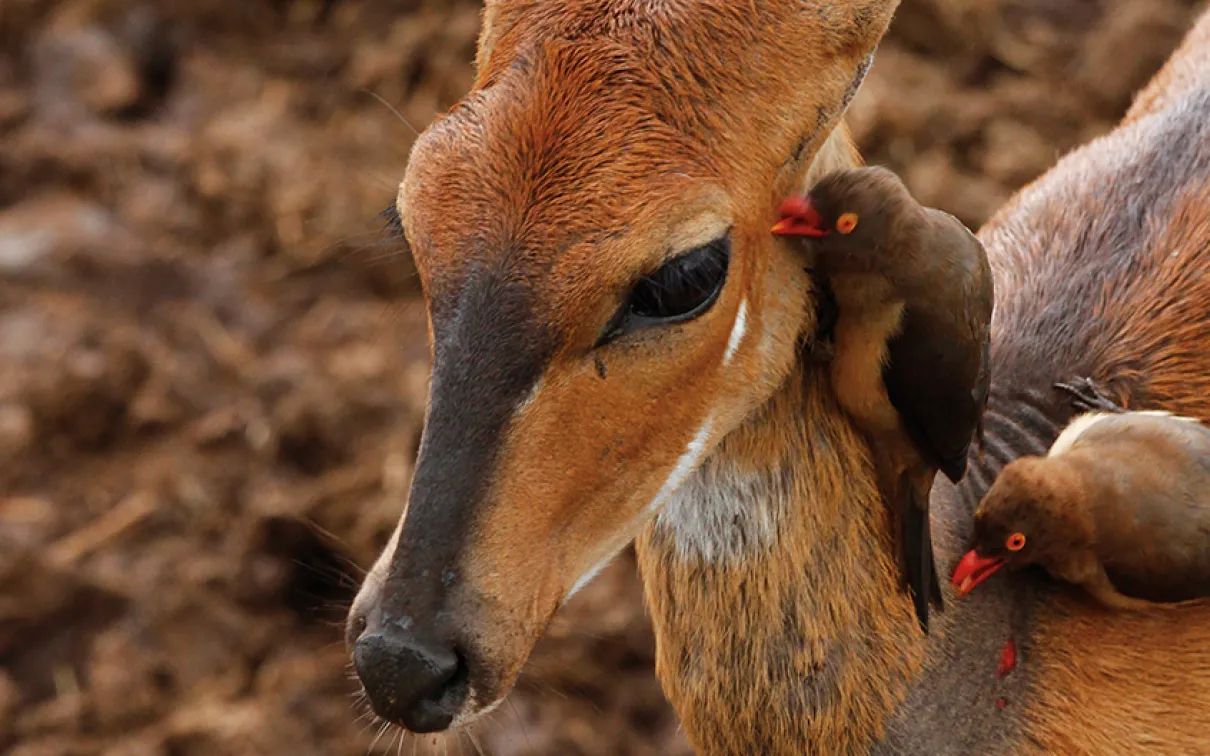Blood Ties
New ROM-original exhibition explores the science and legends around bloodfeeding
Published
Category
Author
Did you know that there are more than 30,000
Did you know that there are more than 30,000 species of animals that feed on blood? Aside from the usual suspects that are the mosquitoes, black flies, and leeches, the larger blood-feeding family distributed across the globe covers a range of creatures, including birds, moths, worms, and snails.
Not only do these animals contribute to the health of our ecosystems, but, for centuries, they have also captured the human imagination. Bloodsucking features prominently in storytelling, medicine, and even the fine arts. Count Dracula would likely not have achieved cult status had it not been for his voracious appetite for human blood.
The ROM-original exhibition, Bloodsuckers: Leeches to Legends, draws its strengths from both the nature and culture of bloodsuckers, blending the biology and evolution of blood-feeding animals with the legends they have inspired. The exhibition covers the role of bloodfeeders in medicine and how they continue to spark scientific discoveries today; it explores the concept of bloodletting—from hungry leeches feeding on patients in the name of health, to barbers and physicians tapping veins for vitality; and, explains ongoing research on bloodborne diseases.
Blood provides our bodies with oxygen, protects us from antibodies, acts as a waste management supplier, and helps regulate our body temperature. It is a fluid in high demand, and according to the American Red Cross, in the US, there’s someone in need of blood every 2 seconds. But beyond its role as an essential body fluid, blood also serves as an essential source of nutrition for more than 30,000 species in the world today. Here, we take a closer look at some of the more famous bloodsuckers and how they are built to feed on blood.
Mosquitoes
Mosquitoes are the only biting flies in Canada that transmit disease to humans. They eat nectar and honey dew (a sticky substance excreted by certain insects). Only female mosquitoes feed on blood as the protein and iron in blood is used to produce eggs. They feed using a proboscis—a long, thin, straw-like structure—which contains numerous needles that are used to saw into the skin of their prey. About 3,500 species of mosquito are known worldwide.
Black Flies
Fossil records show that black flies existed millions of years ago in the Mesozoic Era. The flies’ first victims were likely warm-blooded theropod dinosaurs—the ancestors of modern birds. Nowadays, black flies prey on birds and mammals—warm-blooded vertebrates. Black flies have tiny hairs and sensory organs on their antennae that detect heat and chemicals from prey. Black flies feed with slashing mouthparts—blades to cut and a tube-like structure to suck.
Leeches
Leeches are found on every continent. They live on land and in every major body of water—fresh and saltwater—including the waters of Antarctica. There are about 700 different species of leeches. Not all leeches are bloodfeeders. About two-thirds of the known species feed on blood. Some species use a proboscis to suck blood from beneath the skin. Others have serrated jaws that cut the skin to release blood.
Lampreys
Lampreys have remained relatively unchanged for 360 million years. Lampreys have cartilage but no bones and lack the jaws that most fishes have. Instead, they have round mouths that form a suction disc. Sea lampreys have teeth on their tongues. Their rasping tongues with lobes full of teeth scrape through skin and scales. Only 18 of the thirty-eight species of lampreys are bloodfeeding. The others get all the nutrients they need as larvae and don’t feed at all as adults.
Vampire Bats
Vampire bats are the only mammals that survive entirely on blood. Vampire bats must consume blood every night to survive. Bats that return to the roost without eating are fed regurgitated blood from other bats that found a meal. Vampire bat bites often go unnoticed. These bats are light (thirty grams) and their fangs are sharp to nip quickly. They can drink blood from a sleeping animal for over thirty minutes without waking it up.
Sebastian Kvist
Sebastian Kvist is Curator of Invertebrates in the Natural History department at the ROM.
For more, visit Bloodsuckers: Legends to Leeches, on view at the ROM until March 22, 2020.


